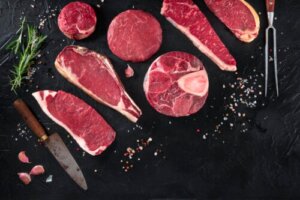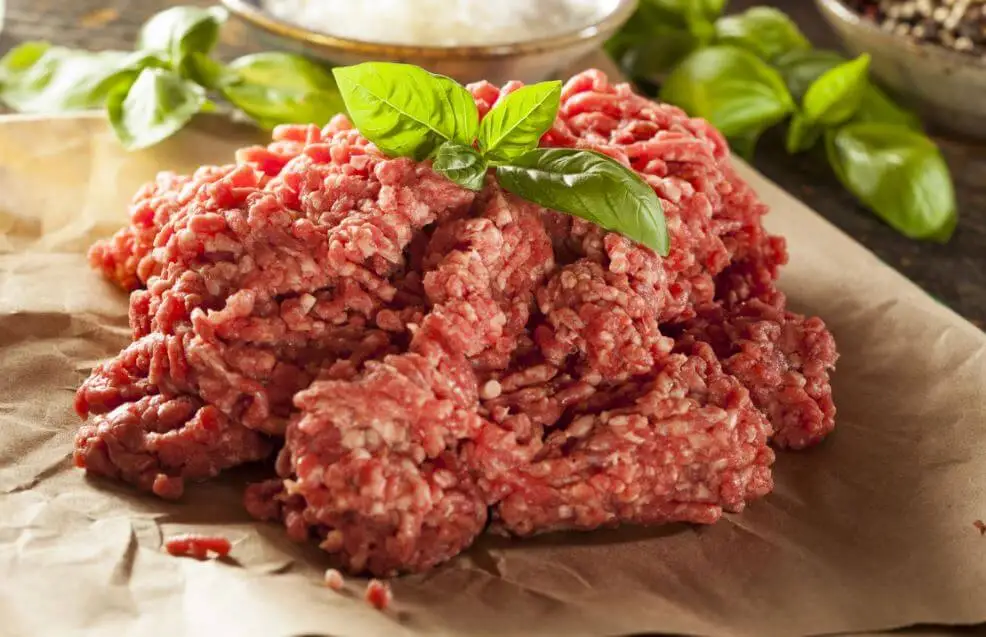The 8 Healthiest Lean Cuts of Meat


Written and verified by the nutritionist Saúl Sánchez Arias
To improve your overall health, it’s good to introduce lean cuts of meat in your diet. They contain good amounts of proteins and essential nutrients, which is why they are a positive addition to your diet in order to achieve the maximum efficiency in your body’s physiological processes. Find out about the 8 healthiest lean cuts of meat in today’s article,
In spite of being demonized by many, meat should be included frequently in your diet.
Before beginning, we have to emphasize that meat fat isn’t bad. At least not when the piece comes from an animal that has been fed on pasture and has been raised in freedom.
In this case, there’ll be optimal levels of omega 3 and omega 6, something that will help to take care of your health. This will keep internal inflammation under control, which, in turn, helps to prevent the development of chronic pathologies.
The best lean cuts of meat
If you want to include a greater variety of meat in your diet, you should know that the best lean cuts are the following:
- High loin. This cut is used to make roast beef.
- Low loin and sirloin. An extremely tender and juicy part.
- Fillet. This name is used to designate the thin lean cuts of beef.
- Silverside or topside. This is usually shredded to be cooked as shredded meat.
- The tail of rump. This is one of the preferred options for a barbecue.
- Shank. This is widely used in stews.
- Steak. A cut with little fat and an intense flavor.
- Skirt steak. It is most commonly minced to be used as stuffing in other preparations.

How to choose lean beef?
When choosing a lean cut of beef it’s important to opt for high-quality pieces, with a lower percentage of fat than the others. The cooking method applied will vary according to the latter.
The areas with less lipids are optimal for grilling, while in roasts it’s better to include some alternatives with a higher percentage of fatty acids. In this way, juiciness is achieved.
In the case of looking for ground beef, it can be a good option to observe the labeling. It’s advisable to avoid those that have high amounts of nitrites or sulfites.
These additives act as preservatives, but can have a negative impact on the state of health if they’re ingested on a regular basis. A study published in the journal Nutrients confirms this. It’s always advisable to prioritize the consumption of fresh foods without additives.
It’s also important to limit the presence of certain parts of the diet, such as offal. These can be nutritionally dense, but will also contain a higher proportion of toxins.
For more information have a look at this article: How Much Meat Should You Eat Per Week?
Tips for cooking lean meat
To cook lean meat correctly, it’s best to opt for alternatives such as the oven, steaming, grilling or broiling. It isn’t advisable to use a lot of oil, although quality salt should be used. It’s even possible to cut the parts with fat when it’s raw, to later remove this portion once the cooking is finished.
In the case of using minced meat, the use of oils should also be limited. This type of product usually contains a sufficient proportion of lipids to prevent the food from sticking to the pan. Nor should it be browned excessively.
Always ensure that at least 65 degrees Celsius (150 Fahrenheit) is achieved inside the meat to reduce microbiological contamination.

You may also be interested in: Turkey and Chicken Meat: What Are the Differences?
Health benefits of lean meat
Lean meat is a nutritionally dense food. Above all, it stands out for its high biological value protein content.
It contains all the essential amino acids and a good digestibility score. Thanks to them, many pathologies associated with lean mass, such as sarcopenia, can be prevented. This is evidenced by a study published in the journal BioMed Research International.
Moreover, beef is able to provide a significant amount of high quality minerals. One example of these is iron.
We’re talking about a nutrient that has been shown to be fundamental in ensuring the transportation of oxygen in the blood. In fact, a deficiency can lead to anemia. The iron that comes from animal foods has a much higher absorption than that from vegetables.
Choose the best lean cuts of meat wisely
There are different types of lean cuts of meat that can be included in the diet on a regular basis in order to improve health. It’s always important to make sure that it’s fresh meat that we consume, avoiding processed versions.
The latter can contain food additives and trans fats of very poor quality that increase the incidence of chronic and complex pathologies.
All cited sources were thoroughly reviewed by our team to ensure their quality, reliability, currency, and validity. The bibliography of this article was considered reliable and of academic or scientific accuracy.
- American Heart Association. (2018). Making the healthy cut: fish, poultry and lean meats. https://www.heart.org/en/healthy-living/healthy-eating/cooking-skills/preparing/making-the-healthy-cut-fish-poultry-and-lean-meats
- Better Health Channel. (s.f.) Meat and poultry. Department of Health. Victoria State Government. https://www.betterhealth.vic.gov.au/health/healthyliving/Meat-and-poultry
- Cínica Mayo. (2021). Cortes de carne de res: una guía para las selecciones más magras. https://www.mayoclinic.org/es-es/healthy-lifestyle/nutrition-and-healthy-eating/in-depth/cuts-of-beef/art-20043833
- Fundación Española de la Nutrición (s.f.). Alimentos y bebidas. https://www.fen.org.es/vida-saludable/alimentos-bebidas
- Klemm, S. (19 de mayo de 2021). Breasts vs thighs: which is more nutritious? Academy of Nutrition and Dietetics. https://www.eatright.org/food/food-groups/protein-foods/breasts-vs-thighs-which-is-more-nutritious
- Suszynski, M. (25 de mayo de 2022). Choosing lean cuts of meat. Mayo Clinic. https://connect.mayoclinic.org/blog/take-charge-healthy-aging/newsfeed-post/choosing-lean-cuts-of-meat/
- Zheng, Y., Li, Y., Satija, A., Pan, A., Sotos-Prieto, M., Rimm, E., Willett, W. C., & Hu, F. B. (2019). Association of changes in red meat consumption with total and cause specific mortality among US women and men: two prospective cohort studies. BMJ, 365, I2110. https://www.ncbi.nlm.nih.gov/pmc/articles/PMC6559336/
This text is provided for informational purposes only and does not replace consultation with a professional. If in doubt, consult your specialist.








